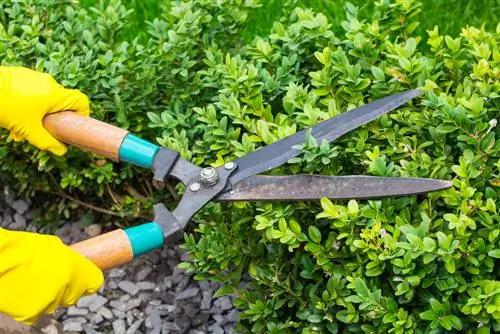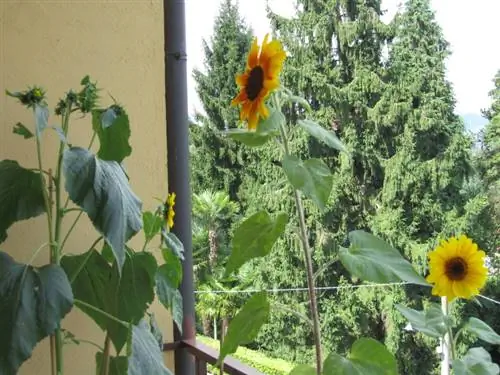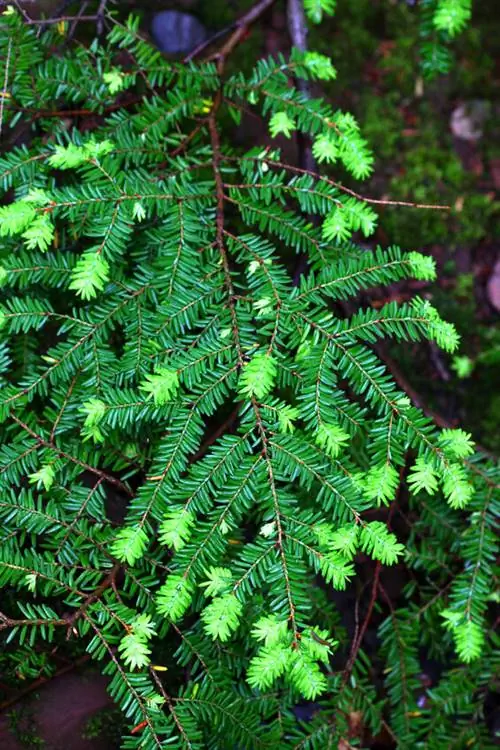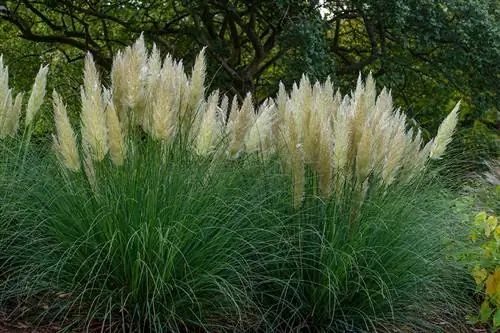- Author admin [email protected].
- Public 2023-12-16 16:46.
- Last modified 2025-01-23 11:21.
Hardly any other plant is as easy to cut as the boxwood. The two species used in the garden - the common boxwood (Buxus sempervirens) and the small-leaved boxwood (Buxus microphylla) - are wonderfully suitable for low borders, for small topiaries or even for ground greening. The only requirement is that you choose a weak-growing variety and cut it back regularly.

How do you keep a boxwood small?
To keep a boxwood small, you should choose a weak-growing variety such as 'Suffruticosa', 'Herrenhausen', 'Faulkner', 'Elegantissima' or 'Blauer Heinz' and cut it back regularly between April and September by cutting it New shoots shortened to a small remainder.
Choose slow-growing boxwood varieties
There are around 60 different varieties known for Buxus sempervirens alone, some with very different growth habits. If the box is to remain small, preference should be given to weak-growing varieties. These include:
- 'Suffruticosa': also dwarf boxwood, only grows three to five centimeters per year, maximum height 100 centimeters
- ‘Herrenhausen’: grows between eight and 15 centimeters per year, a maximum height of 60 centimeters
- 'Faulkner': annual growth between five and 15 centimeters, maximum height of 200 centimeters
- 'Elegantissima': colorful-leaved variety, annual growth between four and six centimeters, maximum height of 150 centimeters
- 'Blue Heinz': annual growth between four and six centimeters, maximum 50 centimeters high
But be careful when choosing the variety: The two smallest varieties, 'Suffruticosa' and 'Blauer Heinz', are considered particularly susceptible to infestation by the boxwood moth. Variegated varieties such as 'Elegantissima', on the other hand, have a particularly high decorative value, but are quite sensitive to frost and other winter weather conditions.
Keep boxwood small by cutting it
Between April and September you can prune your box regularly, although you should only shorten the new shoots to a small extent - otherwise there could be unsightly gaps in the box that will only grow back very slowly. There should be a rest period of at least four weeks between each cutting appointment. However, there is no cutting in autumn and winter. Frequent pruning causes the boxwood to branch out heavily and become very compact and dense. This exterior has a high decorative value and is definitely desirable for many hedges and topiaries, for example. However, the compact growth also endangers the plant, which makes it more susceptible to attack by pests or fungal diseases.
Tip
Since boxwood is affected by many diseases, you can also use similar plants. For example, Ilex crenata 'Stokes' or Ilex aquifolium 'Heckenzwerg' are well suited.






